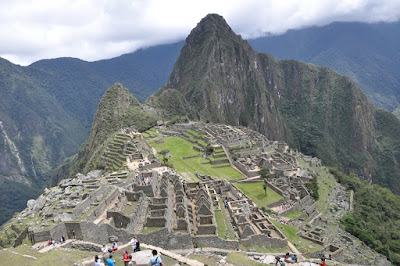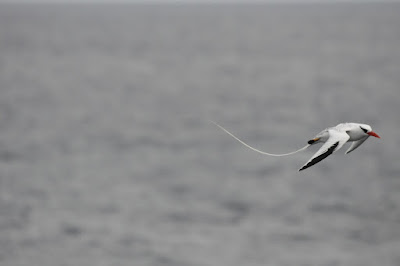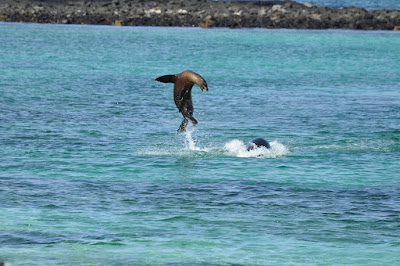We got picked up early at the hotel in Lima to go to the airport where we got a plane to Puerto Maldonado, a small town 30 minutes by plane into the jungle. After packing a duffel bag each with the things we would need the next couple of days, we drove in a small bus for almost an hour on a small gravel road until we arrived at where we would get onto a small boat which would sail us for three hours to the lodge we would call home the following days. The boat was long and narrow, so when seated we were not able to move around as it would distort the equilibrium of the boat and make us tip over.
The bus ride was uneventful, but sailing the boat gave us several viewings of many birds (especially macaws) and capybaras (the largest rodent in the world).
The lodge was much bigger than expected. There were 32 rooms with two beds, large common area and enough room to be able to be alone for yourself if that was needed. But despite that privacy was non-existent. The rooms were placed in 4 building, 8 rooms in each. The building was a big high roof, where the rooms had been separated by 3m tall walls, and the space towards the jungle (away from the walking area) was completely open. This meant that you could hear everything your neighbors where doing, and vice versa.
We arrived at the lodge in the evening, so after dinner we went for a caiman-hunt from the boat. It was completely dark (for some reason no lighting has been installed along the Amazon river – what kind of service is that?!), but we had a guide sitting in the front of the boat with a big flashlight trying to lure the caimans out. It did succeed, and we did see some decent-sized animals, but from a photographer’s view it was a slight disappointment as the best viewings were on the other side of the boat.
The next day we went for a walk in the morning, where we saw several birds, tarantulas, bats, monkeys and more. In the afternoon we went for a walk at a fruit plantation on the other side of the river where we saw what kinds of fruits they would grow in such a place, There was a lot of known fruits (bananas, star fruit, cocoa, oranges etc.), but he also had some that we had never heard of before and only used locally.
We would be leaving very early in the morning the next day, so no nightly activities where planned that night.
Sitting at the hotel in Lima, waiting for a pickup to the airport where I am to look forward to an almost 13 hour flight to Paris, followed by a couple of hours home to CPH. I have only 1½ hours in Paris, so I am looking forward to how that will go – the Charles de Gaulle airport is not the easiest airport to navigate…


















































